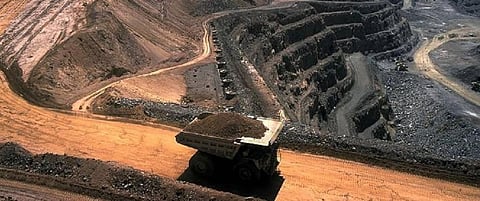

Coal’s days are increasingly numbered. After two years of debate, the German parliament has adopted a law to ensure the phasing out of coal power by 2038 in the first week of July 2020.
It is not the only country to consider phasing out coal. Spain, Japan, the United States are also thinking on those lines.
But even as these countries adopt this line of thinking, India is going two steps back. Prime Minister Narendra Modi recently inaugurated the auctioning of coal mines in the country and said this was the biggest un-lockdown of the country’s coal sector.
Nearly three years ago, Down To Earth had written about the issue in its cover story. The then-Deputy Director-General of Centre for Science and Environment, Chandra Bhushan had argued that in India, the last coal power plant could be closed by 2050. Here is an excerpt:
It’s May 2030. Sunidhi Parmesh of Madhya Pradesh’s Jhabua district heaves a sigh of relief as she prepares breakfast on induction stove and packs it for her daughters getting ready for school.
They have scored well this year and a large part of the credit goes to the 500 Watt (W) rooftop solar panels and 3 kilowatt hours (kWh) battery bank she and her husband, Mahesh, installed a few years ago through a bank loan.
The system harvests and stores enough to supply round-the-clock power to all household appliances, including a refrigerator, a TV and an e-scooter. Sunidhi no longer trudges through the hillocks to collect firewood or waits for a cooking gas (LPG) refill.
Her daughters study even after nightfall and can access internet anytime. Mahesh has also installed a solar water pump in his 2-acre (0.8 hectare) field for drip irrigation. Instead of paying hefty electricity and fuel bills, he now sells the excess solar power to a company — aggregator — in Delhi.
There are 20 such aggregators across the national capital who now pool renewable electricity from individual households and advertise their green credentials to woo consumers. The two big electricity distribution companies (discoms) have shut shop.
Instead, there is one company in each municipality to manage the distribution grid. With solar and wind becoming the cheapest sources of power, there are less takers for coal, and the Coal India Ltd (CIL) has started closing mines.
Coal based power plants now get paid by the government to be on stand-by. India revels in the democratisation of energy as hundreds of thousands of households and businesses turn “prosumers” — they consume as well as produce electricity. To ensure universal access to basic electricity, the government offers subsidy to the poor through direct bank transfer, so that they can buy it from the aggregator of their choice.
Cut to present. The government, with the target to connect 40 million households to the grid by December 2018 and curb rising electricity prices, is investing heavily in coal mines.
It wants CIL, the state monopoly, to produce 1 billion tonnes of coal a year by 2019-20; up from 554 million tonnes in 2016-17. It is looking to open new mines in the untapped 5,100 sq km coal bearing lands.
New gas pipelines are being laid to make LPG available to all. In addition, an ambitious scheme—Ujwal Discom Assurance Yojana (uday)—is being implemented to revive discoms operating in the red.
For reading the rest of ‘End of Coal’ published in the 16-31 October, 2017 edition of Down To Earth, click here